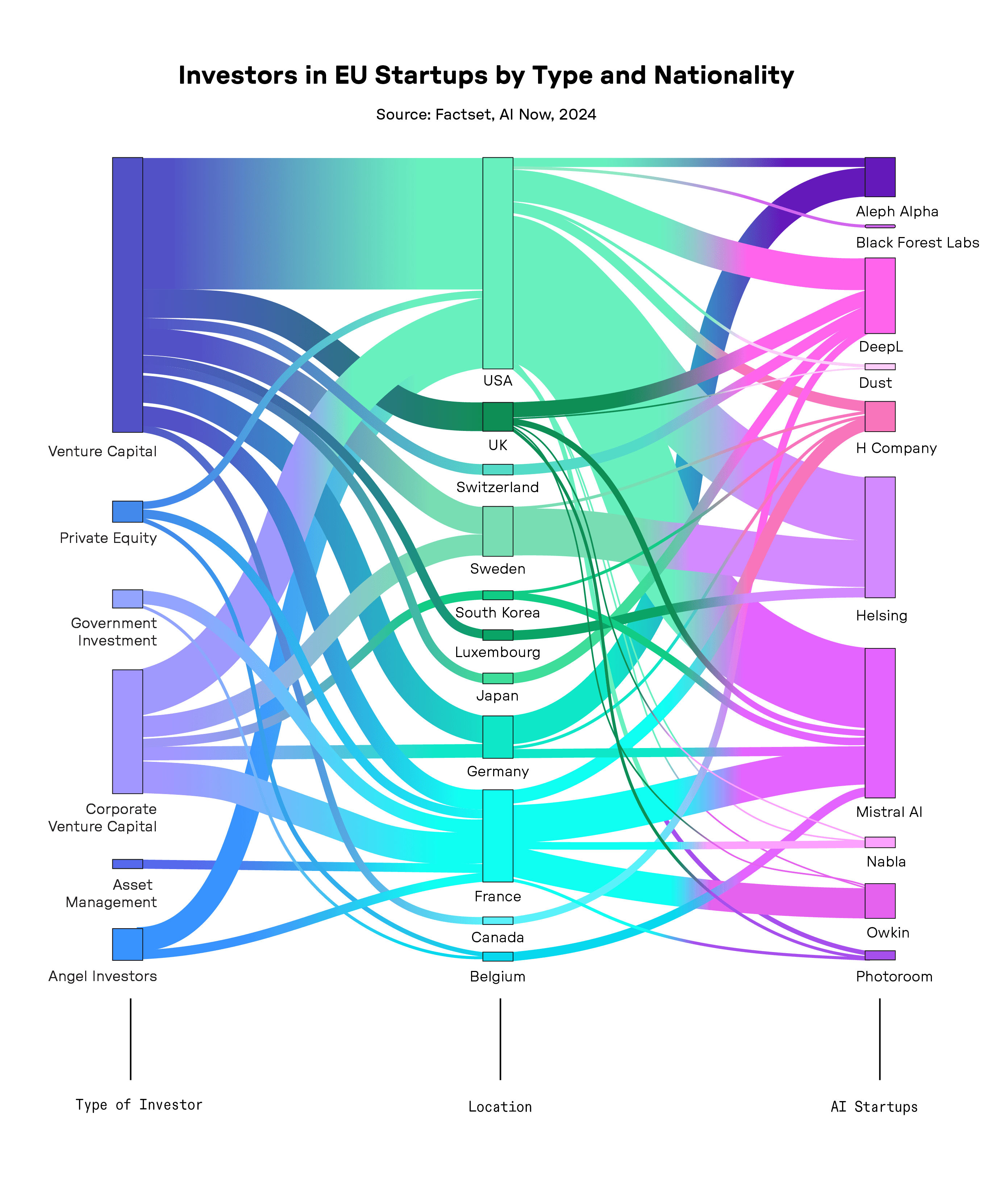Just a few months ago, we might have feared that Europe would definitely lose the pace to the American and Chinese giants of artificial intelligence (AI). But recent trends prove otherwise. The rise of Mistral AI, which raised 385 million euros in less than a year to develop sovereign models, shows that a European champion can emerge. This momentum was reinforced by the AI Action Summit, where Europe unveiled InvestAI, an ambitious initiative set to mobilize 200 billion euros for artificial intelligence.
At the heart of these efforts lies technological sovereignty in AI—the ability of nations to develop, control, and integrate AI technologies within their own ecosystems. More than just an aspiration, sovereignty in AI is becoming a necessity as countries seek to harness its transformative power while safeguarding their autonomy. The World Trade Organization underscores AI's economic impact, estimating that "near universal adoption of AI... could increase trade by up to 14 percentage points" from its current trend.
With the AI market estimated to exceed $1,500 billion by 2030, technological sovereignty is becoming a major strategic issue. As the US invests in massive plans like Stargate, can Europe leverage its recent momentum to establish true leadership? This article outlines five key considerations for achieving and maintaining AI sovereignty.
1. Robust Digital Infrastructure
This includes state-of-the-art data centers equipped with high-performance computing clusters and AI accelerators. But beyond raw computing power, control over specialized processors—such as GPUs and ASICs—is crucial to ensuring uninterrupted AI development and deployment. In this context, Scaleway is taking a decisive step forward, offering a high-performance, alternative with 5,000 latest-generation GPUs tailored to local needs.
Additionally, developing independent cloud platforms optimized for AI workloads can provide the necessary computational power while maintaining data control. Investment in training and research is also key to attracting talent and strengthening this dynamic ecosystem. Initiatives such as Hugging Face and Mistral AI demonstrate that it is possible to develop successful models in Europe.
2. Technological Independence
Europe has a strong track record of innovation, as evidenced by Airbus and the Ariane space program. AI must now be met with the same level of ambition, requiring a concerted effort between public and private players to build an integrated ecosystem. Beyond physical infrastructure, sovereignty in AI also depends on the ability to develop, customize, and control AI technologies. This means investing in domestic research institutions to foster innovation and secure a steady pipeline of talent and intellectual property.
Yet, while R&D investment is booming in the US and Asia, the European Union struggles with fragmented initiatives. However, Europe holds key advantages: a pioneering regulatory framework with the AI Act, world-class research expertise, and strong political will. Another crucial asset is its diverse and extensive data landscape, which, when leveraged effectively, can improve model training and fine-tuning. Ensuring that AI systems align with national interests and values will be essential to shaping a truly sovereign AI ecosystem.
3. AI & Industrial Policy in Europe
We're often sold the idea that regulation holds back innovation, especially in Europe. A convenient myth, especially for digital giants who prefer to play without referees. But in reality, there is no such thing as a market without rules - just different rules for different regions.
Rather than opposing innovation and regulation, we can move them forward together, with clear rules that encourage models aligned with fundamental rights, fair competition, respect for privacy. Implementing data residency policies helps protect sensitive information and aligns with national data protection regulations. Cleared cloud operations and support, along with facility ownership, will contribute to maintaining control over data access and usage. Data isolation measures further ensure that data is not inadvertently shared or exposed to unauthorized entities.
Forming sovereign legal entities can facilitate the enforcement of these regulations and provide a framework for addressing legal challenges arising from AI technologies. Clear guidelines help ensure that AI systems operate within the bounds of national laws and respect citizens' rights.
4. Horizontal and vertical concentration of power
The AI value chain, made up of techniques, functions and applications (TFA model), reveals profound structural weaknesses. In terms of patents, for example, European companies produce three times fewer innovations than their American counterparts.
However, analysis of a sample of the European AI market shows that early- and growth-stage sources of capital in the European AI market are more variegated than in the United State. EU companies are also trying to manage their dependence on hyperscalers. Instead of leaning heavily on Microsoft, Google, and Amazon, such companies are instead opting for a mix of public and private computing resources; a multicloud strategy.
Although AI industrial policy is still in its infancy, a number of initiatives are beginning to outline the contours of a more assertive strategy. The European Commission's €2 billion innovation plan at the Ai Action Summit and the European Chips Act recommendations on investment and regulation testify to a clear desire to accelerate the adoption of AI in strategic industrial sectors and public services, while consolidating national and regional ecosystems. It remains to be seen whether these measures, still fragmented, will be able to be articulated into a coherent and impactful policy on a European scale.
5. Generative API made in Europe
Implementing AI applications in a self-determined and secure way with operating model ensures that you know who is involved in your AI system and have control over operations and data in a legally safe environment. Don't forget that every piece of information you share with a language model (LLM) enables it to position itself and learn. This is precisely why Scaleway develops its own generative APIs. By running Generative APIs on a sovereign AI cloud your data stays in Europe, fully compliant with local regulations. Choosing a sovereign cloud with a necessary catalog enables you to use this AI. Combining computing power, storage and interoperability.
In conclusion, achieving AI sovereignty requires a multifaceted approach that encompasses robust infrastructure, technological independence, stringent data policies, comprehensive legal frameworks, and in-house expertise. Over the past two decades, the productivity gap between the United States and Europe has widened, mainly due to the slow spread of digital technologies. However, by focusing on these key areas encouraging the emergence of local players and fostering cooperation between startups, companies and institutions, Europe can compete with the greatest technological powers.
Source :
UK Statement at WTO AI Conference. UK Government
French AI startup Mistral AI raises €385M. The Economic Times
Artificial Intelligence Market Outlook (Worldwide). Statista
U.S. and Global Research and Development. National Science Foundation
Press Release – European Commission. European Commission


